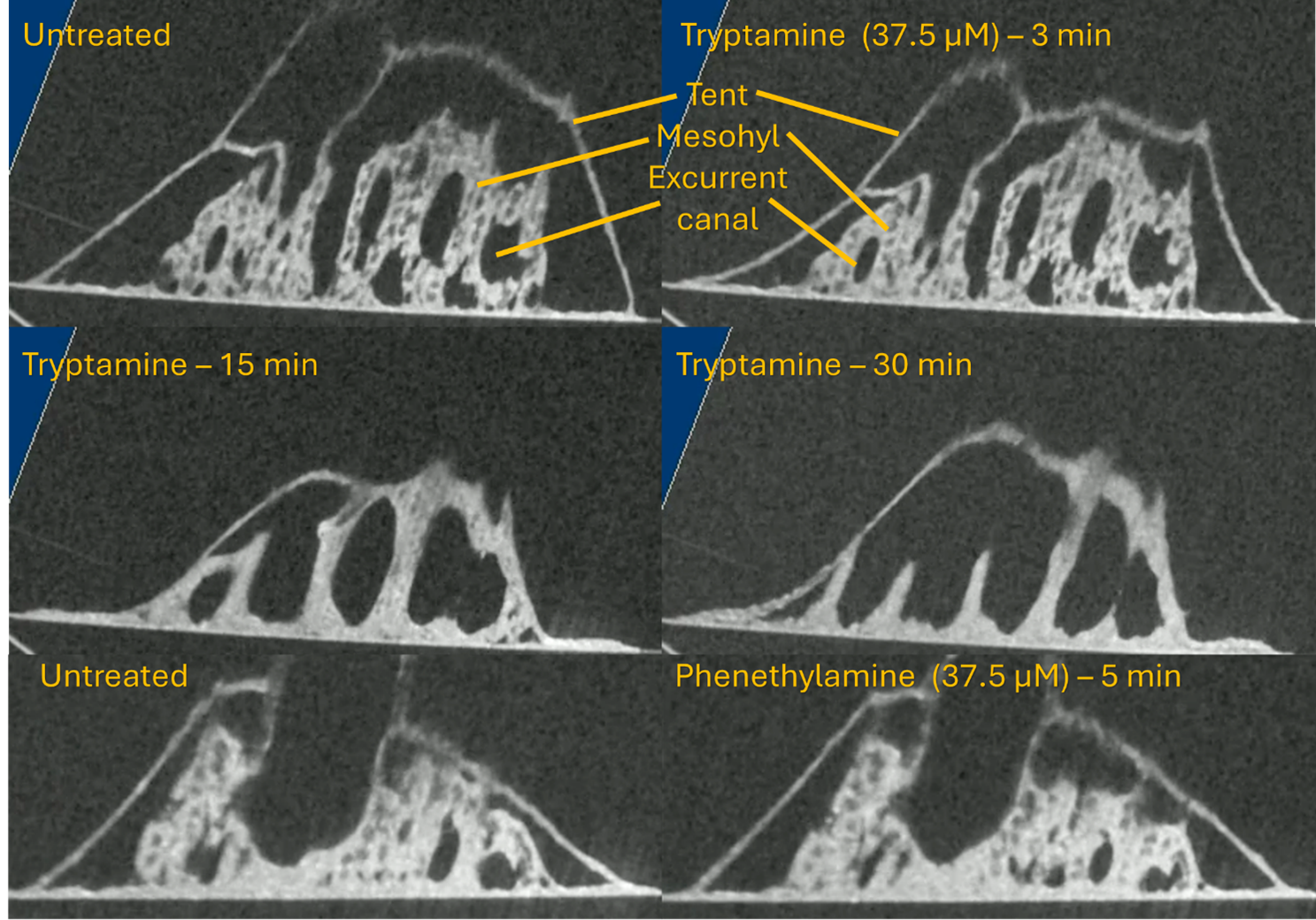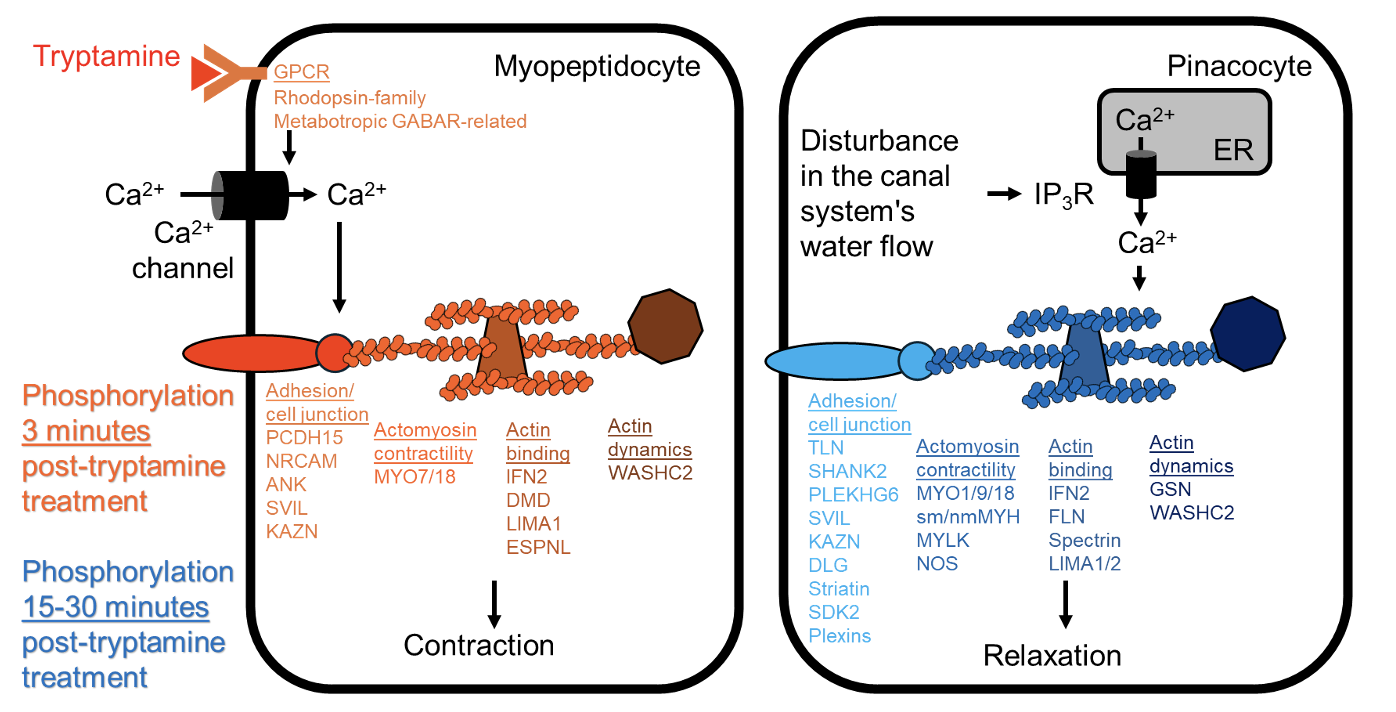Tryptamine, phenethylamine, and tyramine coordinate Spongilla (freshwater sponge) incurrent and excurrent canal tonality in a concentration-dependent manner.
Roy Zang ‘28
(he/him)
Home department: Molecular Cellular and Developmental Biology (Musser Lab)
Research Project: Evolution of cellular modules and their integration in Metazoan biology
Animals consist of specialized cell types that work together to accomplish complex biological processes. Although we have a solid understanding of the inner workings of ~200 different cell types (e.g., neurons and muscles) in model organisms physiology, cellular modules (e.g., synaptic complex and muscular Z-disk) can have their protein components traced back to our distant animal relatives (e.g., sponges and sea anemones) with few cell types (~20). My work aims to characterize the evolution history of neuronal modules by determining and comparing the protein-protein interactions and functional roles of protein homologs across animals. By understanding the integration process of cellular modules across animal cell types, we can systematically determine the cellular origin and diversification of animal physiology.
Relevant Publications


Tryptamine treatment leads to differential phosphorylation of GPCR, cellular adhesion, and actomyosin machinery in Spongilla (Fresh water sponge).